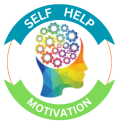So why have accelerated learning techniques become so popular? These methods allow you to get up to speed quickly and retain the information you learn.
Table of Contents

Hi. Ian here, and welcome to this article on Accelerated Learning!
Have you ever wished you could learn faster? Maybe you’re struggling with a new skill at work, or you’re trying to cram for an exam.
Whatever the reason, Accelerated Learning can help you reach your goals faster and more effectively.
So, what exactly is Accelerated Learning? In a nutshell, it’s a set of techniques and strategies that can help you learn more effectively and efficiently. These techniques can be applied to any subject, from learning a new language to mastering a complex skill.
How does Accelerated Learning work?
Accelerated Learning works by engaging all of your senses and learning styles. When you learn something using multiple senses, your brain is more likely to retain the information. Additionally, Accelerated Learning techniques often involve active participation, which can help you learn more deeply.
Some of the benefits of Accelerated Learning include:
- Faster learning: Accelerated Learning techniques can help you learn up to 5 times faster than traditional methods.
- Better retention: You’ll be able to remember more of what you learn, even over time.
- Increased motivation: Accelerated Learning can make learning more enjoyable and engaging, which can lead to increased motivation.
- Reduced stress: Accelerated Learning can help you reduce stress and anxiety associated with learning.
How can you get started with Accelerated Learning?
There are many different Accelerated Learning techniques available. Some of the most popular techniques include:
- Mind mapping: Mind mapping is a visual way to organize information. It can be used to learn new concepts, brainstorm ideas, and solve problems.
- Mnemonics: Mnemonics are memory devices that can help you learn and remember information. For example, you might use a mnemonic to remember the order of the planets in our solar system.
- Spaced repetition: Spaced repetition is a learning technique that involves reviewing information at gradually increasing intervals. This helps to move information from your short-term memory to your long-term memory.
Resources for Accelerated Learning
If you’re interested in learning more about Accelerated Learning, there are many resources available. Here are a few suggestions:
Resources
- Books: There are many books available on Accelerated Learning. Some popular titles include Accelerated Learning for Students by Dave Meier and The Accelerated Learning Handbook by Colin Rose.
- Online courses: There are also many online courses available on Accelerated Learning. Some popular courses include the Accelerated Learning for Beginners course on Udemy and the Accelerated Learning Masterclass course on Skillshare.
- Workshops: There are also many workshops available on Accelerated Learning. These workshops can provide you with hands-on experience with Accelerated Learning techniques.
Accelerated Learning is a powerful tool that can help you learn faster and more effectively. If you’re looking to improve your learning skills, I encourage you to learn more about Accelerated Learning.
Thanks for reading this article! I hope you will find it informative and helpful.
Everyone is looking for ways to learn new things more quickly. The traditional model of learning doesn’t always cut it anymore, especially in a world that moves as fast as ours does. That’s why in this article, we will explore some of the most popular techniques and how they work.
We’ll also discuss the benefits of each approach and offer tips on how to use them effectively. So whether you’re looking to get ahead in your career or just want to learn more efficiently, read on for helpful advice on accelerated learning!
What Is Accelerated Learning And How Can It Help You Learn Faster And More Effectively?
Accelerated learning is a term used to describe a range of educational techniques that aim to help students learn more quickly and effectively. The approach is based on the premise that the brain is capable of absorbing and processing large amounts of information if it is presented in the right way.
Several different techniques can be used as part of an accelerated learning program, but some common approaches include mind mapping, chunking, and using imagery and color to code information.
While accelerated learning can be beneficial for anyone who wants to learn more quickly, it can be particularly helpful for those who are struggling to keep up with a traditional educational program. The technique can also be useful for those who need to learn a lot of information in a short period, such as for exams or professional qualifications.

The Benefits Of Using Accelerated Learning Techniques
There are many benefits of using accelerated learning techniques. Perhaps the most obvious benefit is that you can learn information more quickly. This can be especially helpful if you’re trying to learn a new skill or language, or if you need to memorize a large amount of information for an upcoming test or exam.
Another benefit of using accelerated learning techniques is that they can help you retain information better. This is because these techniques often involve active participation, rather than simply listening or reading passively. By actively engaging with the material, you’re more likely to remember it later on.
Finally, using accelerated learning techniques can also help reduce stress and improve your mood. Many people find traditional learning methods to be very tedious and stressful. However, by using accelerated learning techniques, you can often achieve the same results in a fraction of the time – and without all the stress!
You may be surprised at just how much they can help you achieve your goals – both in school and in life!
The Benefits Of Accelerated Learning For Students
As any parent knows, one of the most important things you can do for your children is to help them succeed in school. A good education lays the foundation for a successful career and a happy life. One way to help your child succeed in school is to enroll them in an accelerated learning program.
Accelerated learning programs are designed to move students through the material at a faster pace than traditional classrooms. As a result, students have more time to master the material and are less likely to become bored or frustrated with the material.
In addition, accelerated learning programs often allow students to customize their learning experience to better suit their individual needs. As a result, your child can receive a higher-quality education that is tailored to their specific needs and abilities.
How Does The Brain Process Information And What Can You Do To Optimize Your Learning Experience?
The brain is an amazing organ that is constantly processing information. To optimize your learning experience, it is important to understand how the brain processes information.
The brain takes in information through the senses, and then it uses that information to form memories. Memories are stored in the brain in a variety of ways, depending on the type of information and how often it is used.
For example, procedural memories, which are memories of how to do something, are stored differently than declarative memories, which are memories of facts and events. The more often a memory is used, the stronger it becomes. This is why it is important to practice what you want to learn; by repeatedly accessing a memory, you can make it stronger and easier to recall.
Additionally, sleep plays an important role in memory consolidation, so getting a good night’s sleep can help improve your learning. So, if you want to optimize your learning experience, remember to pay attention to how your brain works and give it the proper conditions to form strong memories.

How Does Stress Affect Learning And What Can You Do To Minimize Its Negative Impact On Your Ability To Learn Effectively?
Most people experience some form of stress in their lives, and it can have a very negative impact on our ability to learn effectively. Stress can cause us to feel anxious and overwhelmed, which can make it difficult to concentrate or retain information.
Additionally, stress can lead to physical symptoms such as headaches or stomach aches, which can further interfere with our ability to learn.
There are many things that we can do to minimize the negative impact of stress on our learning.
First, it is important to identify the sources of stress in our lives and try to eliminate them whenever possible.
Second, we can learn how to better manage our stress levels through relaxation techniques or exercise.
Finally, we can make sure that we are taking care of our physical health by eating a healthy diet and getting enough sleep.
By taking these steps, we can help reduce the negative impact of stress on our learning.
How To Set Up Your Own Accelerated Learning Environment At Home Or In The Office
You can boost your learning productivity by making simple changes to your environment. The right environment promotes focus and concentration and gives you the energy and motivation to power through your studies. By setting up an accelerated learning environment, you can make the most of your time and reach your academic goals.
Here are a few tips for setting up an accelerated learning environment:
- Choose a quiet space: Learning is difficult when you’re constantly interrupted by external noise. Choose a room in your home or office that is relatively quiet and free from distractions. If possible, set up a study area away from common areas such as the living room or kitchen
- Minimize distractions: In addition to external noise, it’s important to minimize other sources of distraction. Turn off the TV, silence your phone, and close any doors or windows that might allow for outside disturbance. If you’re working in an open office space, consider using headphones or earplugs to block out noise
- Create a positive atmosphere: The way you decorate your study space can impact your mood and motivation. Make sure the area is well-lit and airy, and add personal touches such as photos, plants, or artwork that make you feel happy and inspired. Consider investing in a comfortable chair or desk to help you stay comfortable during long study sessions
By creating an environment that supports accelerated learning, you can make the most of your time and reach your academic goals.

Tips For Improving Memory, Focus, And Motivation
It’s easy to feel like our memories, focus, and motivation are slipping as we get older. We may not be able to recall information as quickly as we used to, or we may find it harder to stay on task. But there are some things we can do to help improve our cognitive functioning.
One of the best ways to improve memory, focus, and motivation is by exercising regularly. Exercise increases blood flow to the brain and has been shown to help with memory, focus, and motivation. Furthermore, exercise has also been linked with a reduced risk of Alzheimer’s disease and other forms of dementia.
In addition to exercising, some dietary changes can help improve our cognitive functioning. Eating plenty of fruits and vegetables, whole grains, and healthy fats can all help improve brain function. omega-3 fatty acids in particular have been linked with improved brain health.
Finally, staying socially active and engaged can also help keep our minds sharp. So if you’re looking for ways to improve your memory, focus, and motivation, be sure to try these tips!
The Importance Of Taking Breaks And Avoiding Burnout
In today’s fast-paced world, it’s easy to get caught up in the hustle and bustle of everyday life and forget to take breaks. But taking breaks is essential for our physical and mental health. When we don’t take breaks, we can become stressed, overwhelmed, and burned out.
Burnout is a state of physical, emotional, and mental exhaustion that can occur when we’re constantly working or under pressure. It can lead to a variety of symptoms, including fatigue, irritability, difficulty concentrating, and mood changes.
There are several things we can do to avoid burnout, and one of the most important is to take breaks. Breaks give us a chance to step away from our work, relax, and recharge. They can also help us to clear our minds and come back to our work refreshed and focused.
There are many different ways to take breaks. Some people like to take a walk, listen to music, or read a book. Others prefer to spend time with friends or family or do something creative. The important thing is to find something that works for you and that you enjoy.
Taking breaks is not a sign of weakness. It’s a sign of strength. It shows that we’re aware of our limits and that we’re taking care of ourselves. So next time you’re feeling overwhelmed, don’t be afraid to take a break. It’s one of the best things you can do for your health and well-being.
Here are a few tips for taking effective breaks:
- Make sure your breaks are regular. Schedule breaks into your day, even if it’s just for a few minutes
- Get away from your work. If possible, step outside or go to a different room
- Do something you enjoy. This will help you relax and recharge
- Don’t check your work during your break. This will help you to truly relax and avoid feeling stressed when you return to work
- Taking breaks is essential for our physical and mental health. When we don’t take breaks, we can become stressed, overwhelmed, and burned out.
- There are many different ways to take breaks, so find something that works for you and that you enjoy. Taking breaks is not a sign of weakness. It’s a sign of strength. So next time you’re feeling overwhelmed, don’t be afraid to take a break. It’s one of the best things you can do for your health and well-being.
How To Use Accelerated Learning In The Classroom
A lot of educators have heard of accelerated learning, but they may not know how to implement it in the classroom. Here are a few tips:
First, create a positive and stimulating learning environment. This means providing plenty of visual aids and hands-on materials, as well as making sure the room is comfortable and quiet.
Second, use multiple modalities to present information. This means using a mix of visual, auditory, and kinesthetic methods. For example, you might show a video clip, then have students discuss it in small groups, and then write a summary.
Third, give students plenty of opportunities to practice what they’re learning. This could involve role-playing exercises, writing assignments, or projects.
Fourth, provide regular feedback so that students can see their progress. This could be in the form of grades, comments on assignments, or verbal feedback during class.
By following these tips, you can create an accelerated learning environment in your classroom that will benefit all your students.

Additional Resources On Accelerated Learning Methods
The basics of accelerated learning are widely known and used in many different situations. However, there are always additional resources available on the topic if you want to learn more.
One great resource is the book “How to Learn Anything Quickly” by Rick Klemp.
This book goes into detail about how to effectively use accelerated learning methods to improve your skills. In addition, numerous online resources offer tips and advice on how to implement these methods.
Finally, there are plenty of classes and workshops available that can teach you more about accelerated learning. With a little effort, you can easily find all the resources you need to become an expert in this field.
FAQS
What is the accelerated learning model?
Accelerated learning is a multidimensional approach where learners are in direct control of what they are learning.
How hard are accelerated courses?
It can feel a little more challenging when you take an accelerated program because you’re completing the same amount of work but in a shorter period.
Are accelerated classes good?
The main pro of an accelerated program and/or classes is that students get out of school and into the workforce as quickly as possible.
How do you pass an accelerated course?
Organization. Read the syllabus! … Time management. You should allocate time every day to complete your readings or assignments. …
Engagement. Actively participate in your online course. …
Focus. … Take a Break.
How do I accelerate learning?
Accelerated-Learning Strategies
Accelerate. Don’t Remediate. … Practice Makes Progress. Don’t try to cram learning into a few days, or even a few weeks. …
Harness the Power of Tech. Technology motivates students, encouraging them to push through challenges. … Do Assessments, Not Too Much. …
Emphasize Social and Emotional Learning.
Final Words
Accelerated learning is a powerful set of techniques to help you learn more quickly and effectively. By understanding how your brain works and using the appropriate techniques, you can optimize your learning experience and improve your ability to learn new information.
We hope this article has provided you with some valuable insights into how you can get the most out of your education.
Wishing you Health, Wealth, and Happiness
